Oklahoma is known for its tornados, agriculture, horned toads, and so much more. It also has some pretty great wildlife other than the horned toads. It’s possible to stumble upon everything from scorpions to tarantulas to bison or armadillos. It’s also a state boasting loads of feathered life. Let’s jump right into owls that live in Oklahoma and where you’re likely to see them.
1. American Barn Owl (Tyto furcata)
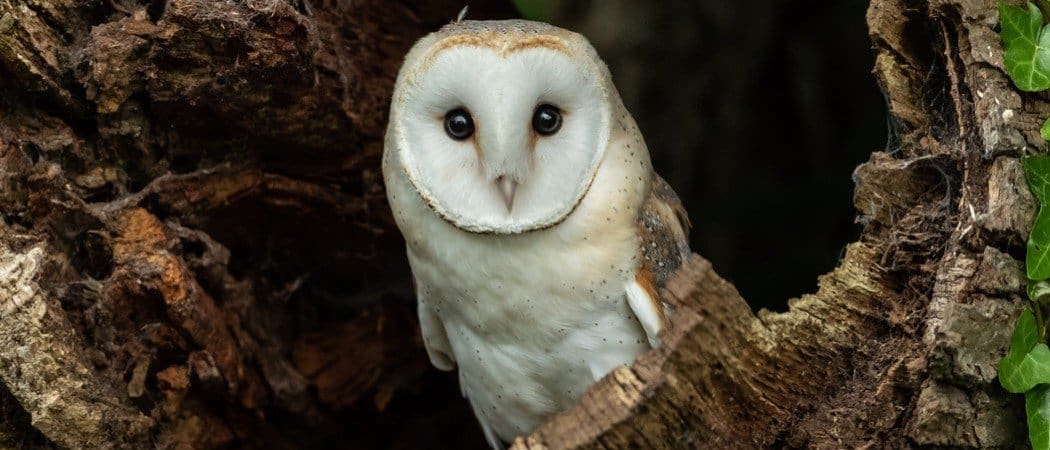
Barn owls are mysterious and seen only by a lucky few.
©iStock.com/Alan Walker
Barn owls are notoriously beautiful and stay hidden most of the time. It’s rare to see this owl in Oklahoma unless you happen to be lucky enough to have one call a tree or barn in your yard home. They are far from rare, even if seeing one is infrequent. However, they are an uncommon species in Oklahoma. Barn owls love barns and areas around livestock feed because of the rodent population it supports. They can also be found sleeping in tree hollows during the daytime. Barn owls are easy to recognize with their brown and grey speckled bodies paired with their round, white faces and chests. The birds are 13 – 15 inches tall, weighing 0.75 – 1.5 pounds. They were once thought to carry mystical properties.
2. Eastern Screech Owl (Megascops asio)

Screech owls have one of the most recognizable calls of any owl.
©Jens_Lambert_Photography/iStock via Getty Images
The small eastern screech owl is adorable and extremely diverse when it comes to living arrangements. They live in most places in OK and are not overly afraid of humans or vehicles. Sadly, many are hit by cars for that reason. They stand only 6 – 10 inches tall and weigh a slight 4 – 9 ounces. Considering the size of the barn owl’s size, they are tiny. Screech owls have light reddish-brown feathers speckled with white spots and small ear tufts. One of their most notable feathers is their large, expressive eyes. These birds are far from rare and can be seen throughout the state.
3. Great Horned Owl (Bubo virginianus)
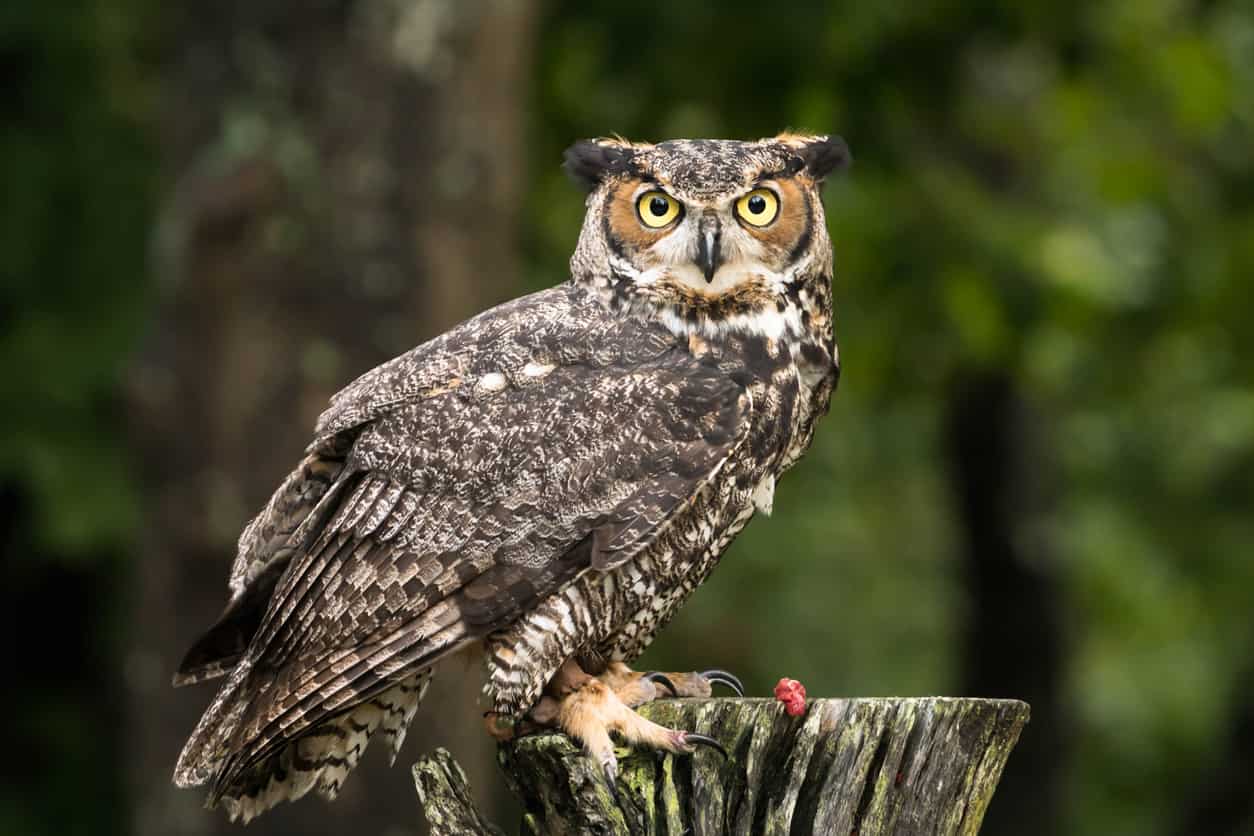
The horned owl is the most widely recognized of any other owl species.
©iStock.com/makasana
The great horned owl is a massive masterpiece of a bird. They can also outlive other owls by about 40 years! Most species of owl live for roughly 10 years. The great horned owl can live to be 50 years old! They are generally found in wooded locations, and their hoots can be heard from a distance, though with the coloring of their feather, they are hard to spot in forests. The large owl stands 17 – 25 inches tall and weighs 2 – 4 pounds on average. They have an impressive wingspan that can reach 5 feet wide. The owls have dark brown, tan, and white speckled feathers and “horns.” The horns are just long ear tufts. They are very common and can even be spotted in urban settings in the state.
4. Burrowing Owl (Athene cunicularia)
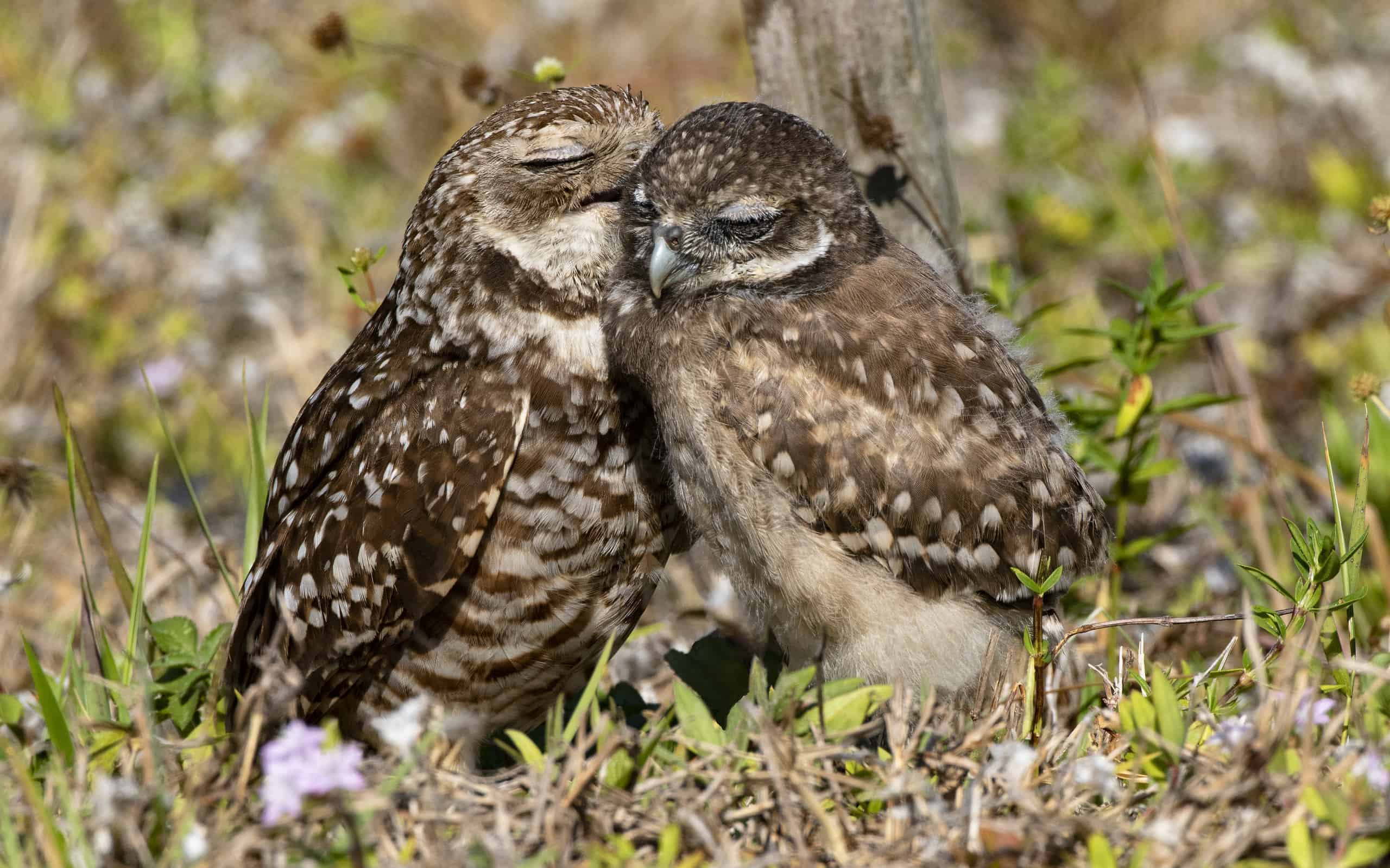
Burrowing owls are another small owl species.
©Florence and Joseph McGinn/iStock via Getty Images
The burrowing owl is the cutest owl species on our list. Seeing this owl in Oklahoma is rare, even if the birds are abundant elsewhere. They are small, with a height of 8 – 11 inches and a weight of 5 – 9 ounces. Their wingspan can reach 24 inches, matching their size to the screech owl’s. Their light brown feathers, covered in white speckles and missing ear tufts, add to their appeal. They have huge, bright yellow eyes. These tiny burrowing owls prefer open prairies, grasslands, and deserts and burrow into the ground to make their nests.
5. Barred Owl (Strix varia)

The
barred owl
looks as if it’s wearing a hood.
©Malachi Ives/Shutterstock.com
The barred owl is a very common medium-stature owl in Oklahoma. They stand 15 – 25 inches tall with a wingspan of 3 – 4 feet wide and typically weigh 1 – 2.5 pounds. These birds have a unique appearance, with a distinctively dark line framing their apple-shaped faces. They also have horizontally barred feathers all the way around their bodies. They prefer to stay hidden in the forest during the daytime, but sometimes, their hoots can be heard.
6. Northern Saw-Whet Owl
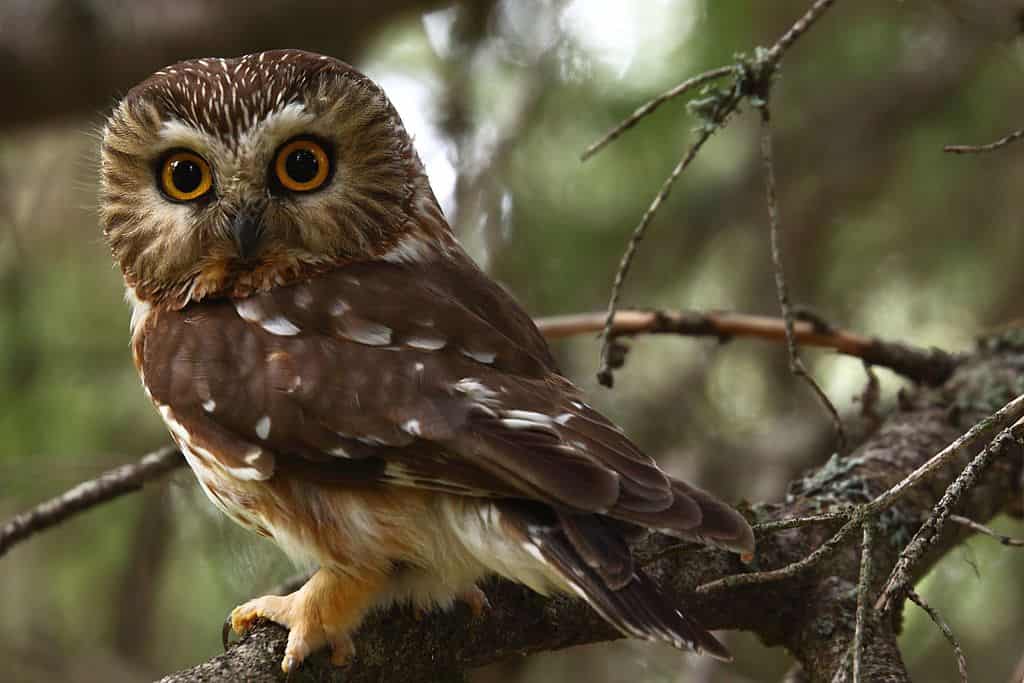
These expressive owls resemble the commonly seen owls in children’s books.
©Kameron Perensovich, CC BY-SA 2.0, via Wikimedia Commons - License
The northern saw-whet owl is a small and charming bird. They have a 6.5 – 8 inches length and weigh roughly 2 – 5 ounces. Their slight wingspan is 16 – 22 inches wide. These little owls are uncommon and rarely seen in OK. The brown shades mixed with white on the owl’s body help them blend in perfectly with the bark on trees within their favorite place in the forest. Their huge yellow eyes give them an adorable and whimsical look. They enjoy coniferous trees, and since their habitat is under threat in OK, they live mostly in other parts of the country.
7. Snowy Owl
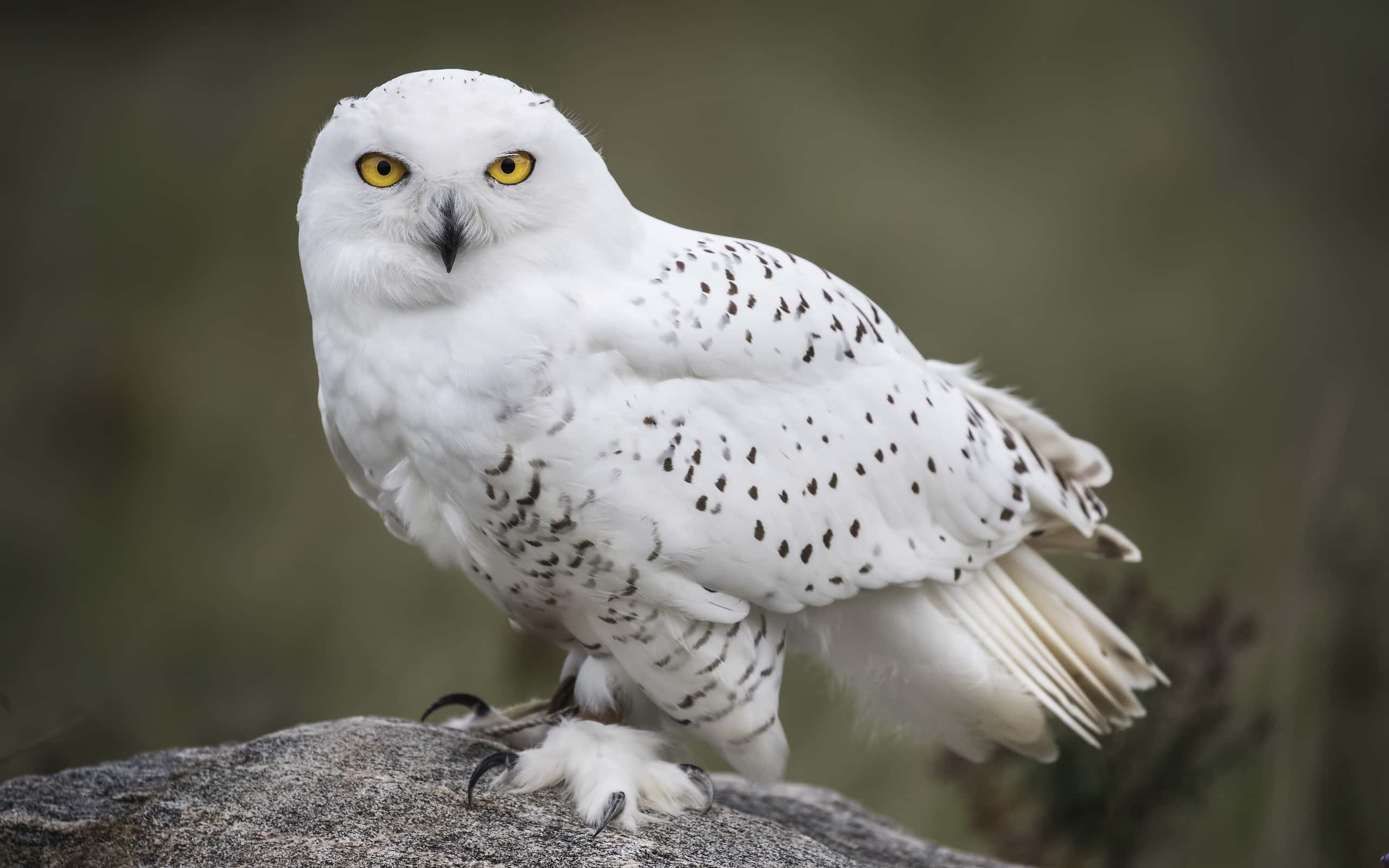
The
snowy owl
is a haunting sight that many myths have been built around.
©Carol Gray/iStock via Getty Images
The snowy owl looks like a beautiful ghost flying in the night. It may come as a shock that these mighty snow owls exist in a place with very little snow. Some owls in Oklahoma are simply passing through. The snowy owl is a large bird measuring 20 – 30 inches tall and weighing 4 – 7 pounds. They have an enormous wingspan of 4 – 5 feet across. The owls are migratory and call the frigid Arctic their home. They occasionally make an appearance south of their home. The majestic owl builds its nest on the forest floor and feeds predominantly off lemmings on the Arctic tundra. They have become increasingly rarer and are listed as vulnerable by the IUCN. Sadly, they are hunted for their beautiful, pristine feathers.
The photo featured at the top of this post is © iStock.com/Bob Hilscher
Thank you for reading! Have some feedback for us? Contact the AZ Animals editorial team.







